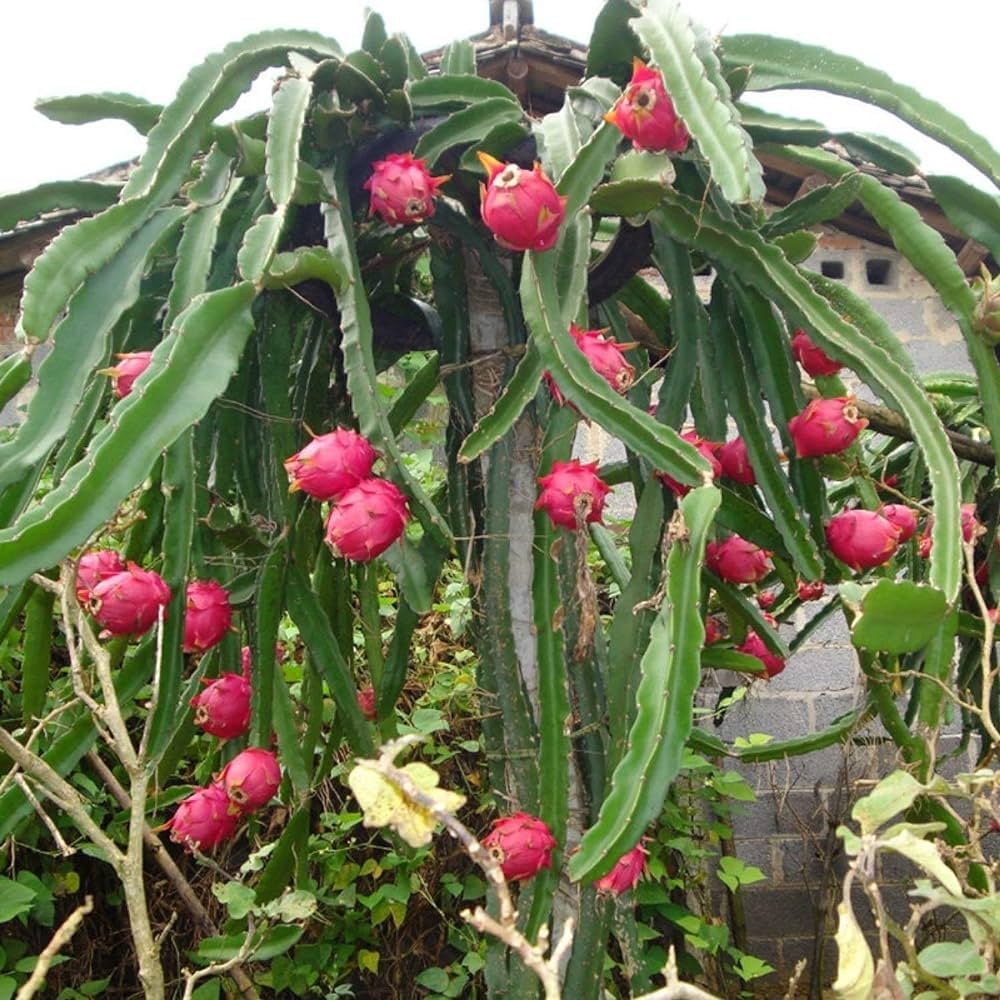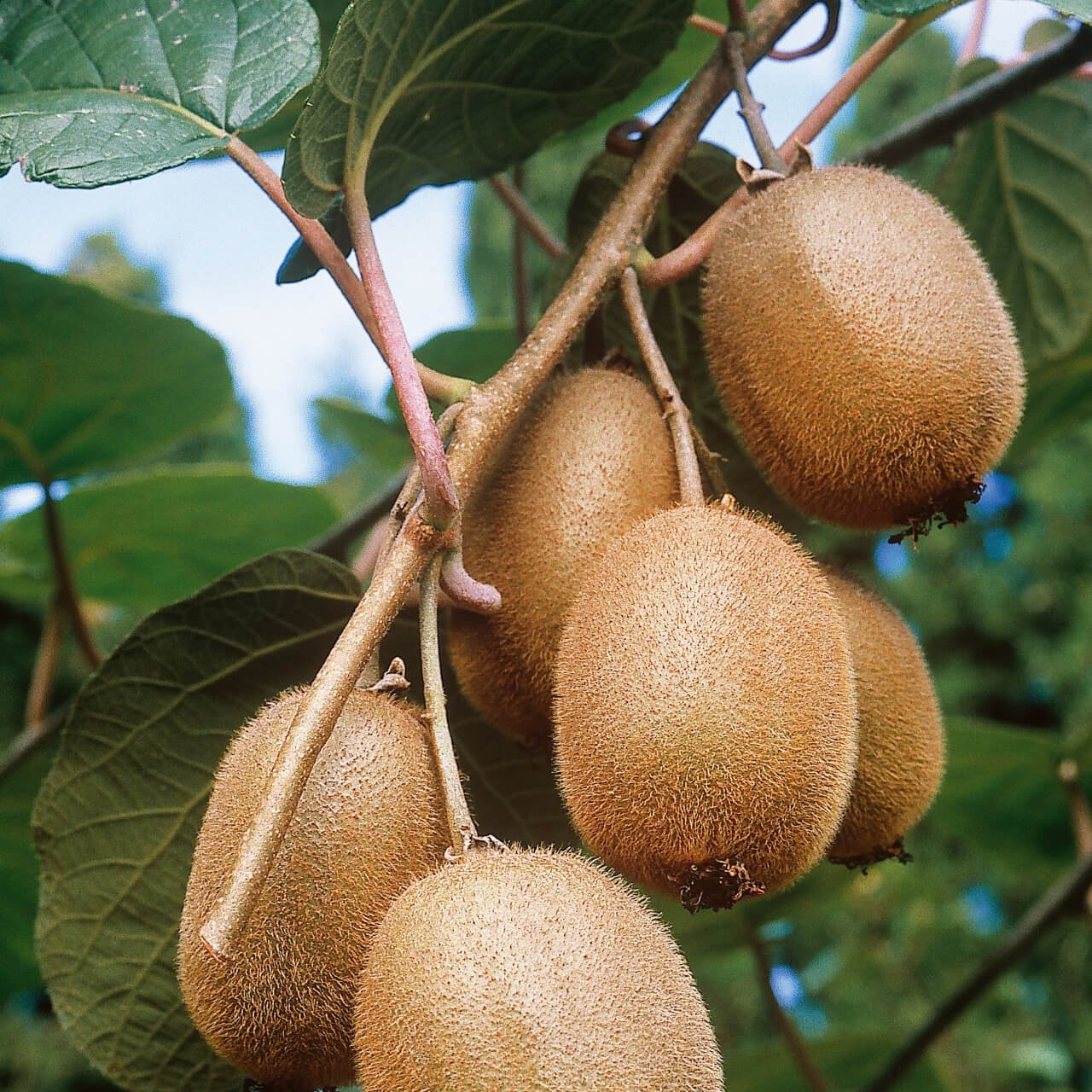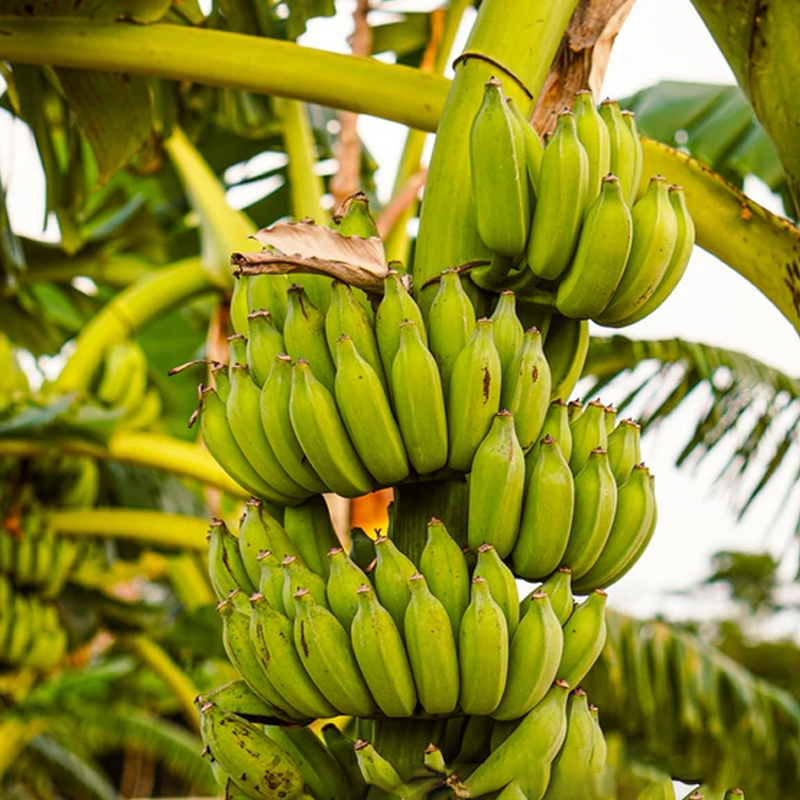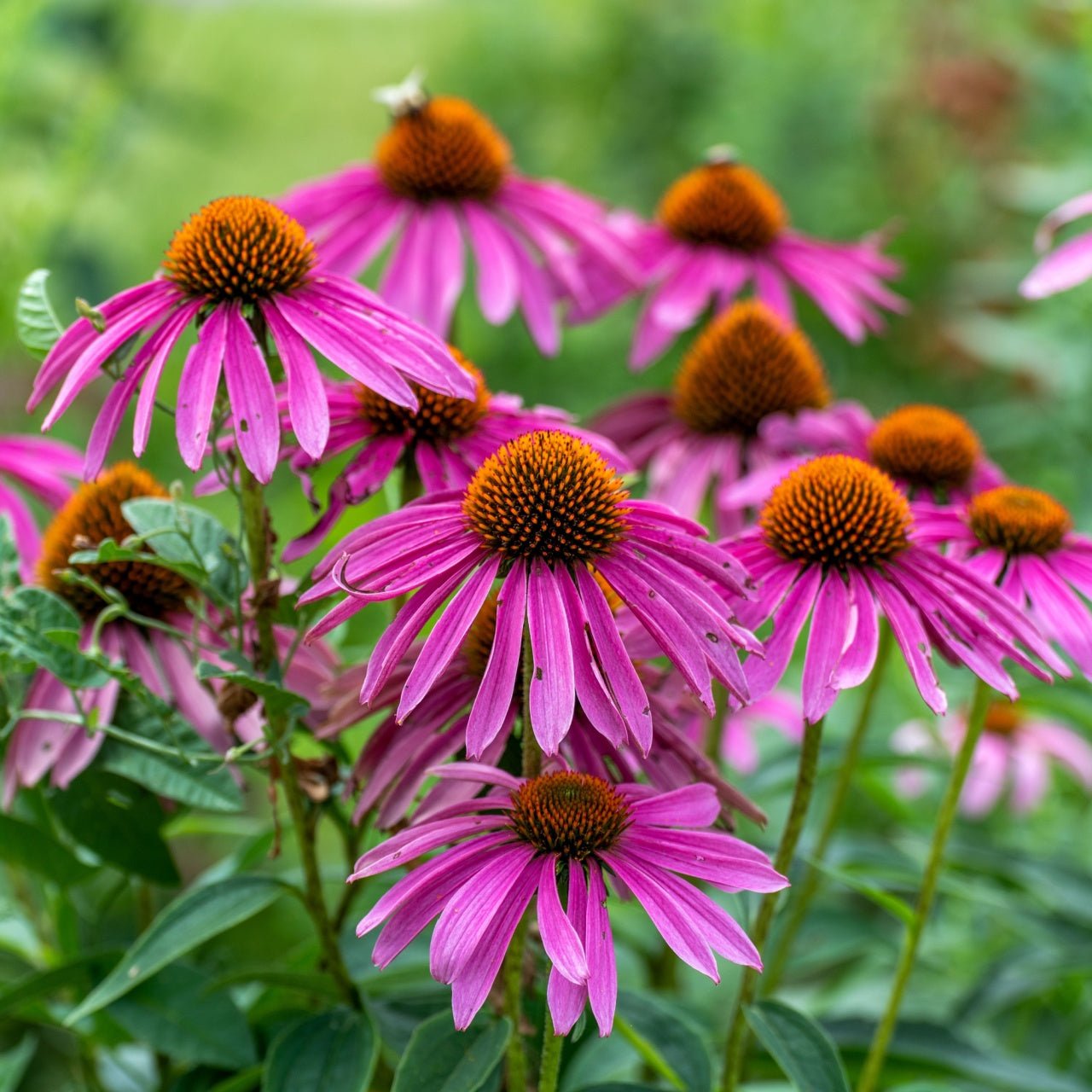



Echinacea Plant
Attracts pollinators like bees
Low-maintenance and hardy plant
Long blooming season
Thrives in
ZONE 3ZONE 4ZONE 5ZONE 6ZONE 7ZONE 8ZONE 9This plant ships:
Ships Week of May 12th1 Year Guarantee on all plants
Echinacea Plant - Coneflower
The echinacea plant is a famous Spring and Summer blooming pollinator perennial. It's also known as the Purple Coneflower. At maturity, it can grow from 1 to 3 feet in height and serves as a master of the flower garden to attract monarchs, goldfinches, and all types of pollinators and birds. Monarchs flock to these at TN Nursery. Go to YouTube and search "TN Nursery Monarchs on Coneflowers" to see all the videos Tammy puts on YouTube to prove they flock to them. This is our best-seller perennial, and for a good reason; look at the videos, the proof's here!
Echinacea Plant Blooms Light-Dark Purple
They are beautiful native perennial flowers with super sturdy stems holding the flowers in place. They have daisy-shaped blooms but are dark purple and very colorful in a sun garden. Depending on the pH of your soil, the blooms range from pale purple to deep purple when the pH is balanced.
Echinacea Plant Has Unique Foliage
This perennial has lanced-shaped leaves and blooms, and they vary in size, often ranging from medium height to larger, making them unfit. They are also a favorite in flower beds and gardens alike. There are other species of coneflowers, known as cultivars. The yellow varieties are well-accented.
They do Well In Dry Areas
Echinacea plants prefer the sun and a good drainage area. The spreading petals offer the flower a disc-like appearance, often used in many upscale landscaping designs and schemes. These long-blooming perennials rebloom every spring, offering years of enjoyment in the garden. They can also thrive in partial shade. Being one of the top pollinator flowers, this is deficient maintenance and easy to care for. It's a wildflower native to the Eastern United States, and some of the D.O.T.s have planted it in interstate mediums to restore the monarch's extinction. They are highly sustainable flowers that you will never tire of due to their ability to ward off pests and diseases, making them highly desirable.
TN Nurseries' Absolute Best Selling Plant Of All Times
Where does it grow best?
It grows best in loose-textured, moderately fertile, well-drained soil, full to part shade. It is a zone 3-9 perennial that flourishes in zone 3. It needs a place with moderate rainfall and enough air circulation.
What is the lifespan of them?
They are perennials which will grow back year after year. If given the proper care, they can live for at least several years, of which they can bloom from mid-summer up to fall.
Can you grow them from cuttings?
It can indeed be grown from cuttings, although this is rare as people prefer to grow from seeds or by division on mature flowers. Softwood cuttings are best taken in early summer and sown in a growing medium that has good water drainage and moisture content that remains constant.
Can you grow them in pots?
It can also be grown in pots but then the pot used must be large enough to allow the flower to develop into a deep root system. Grow in a pot with well-draining soil and place the pot where it will be able to receive full sunlight.
How often do you water them?
Echinacea should be watered after planting for good root growth. But once the flower is established, most won't need watering too often. Water the flowers if the soil is dry once a week, but it all depends on the weather conditions of the site.
This Is How Your Plants Will Look upon Delivery
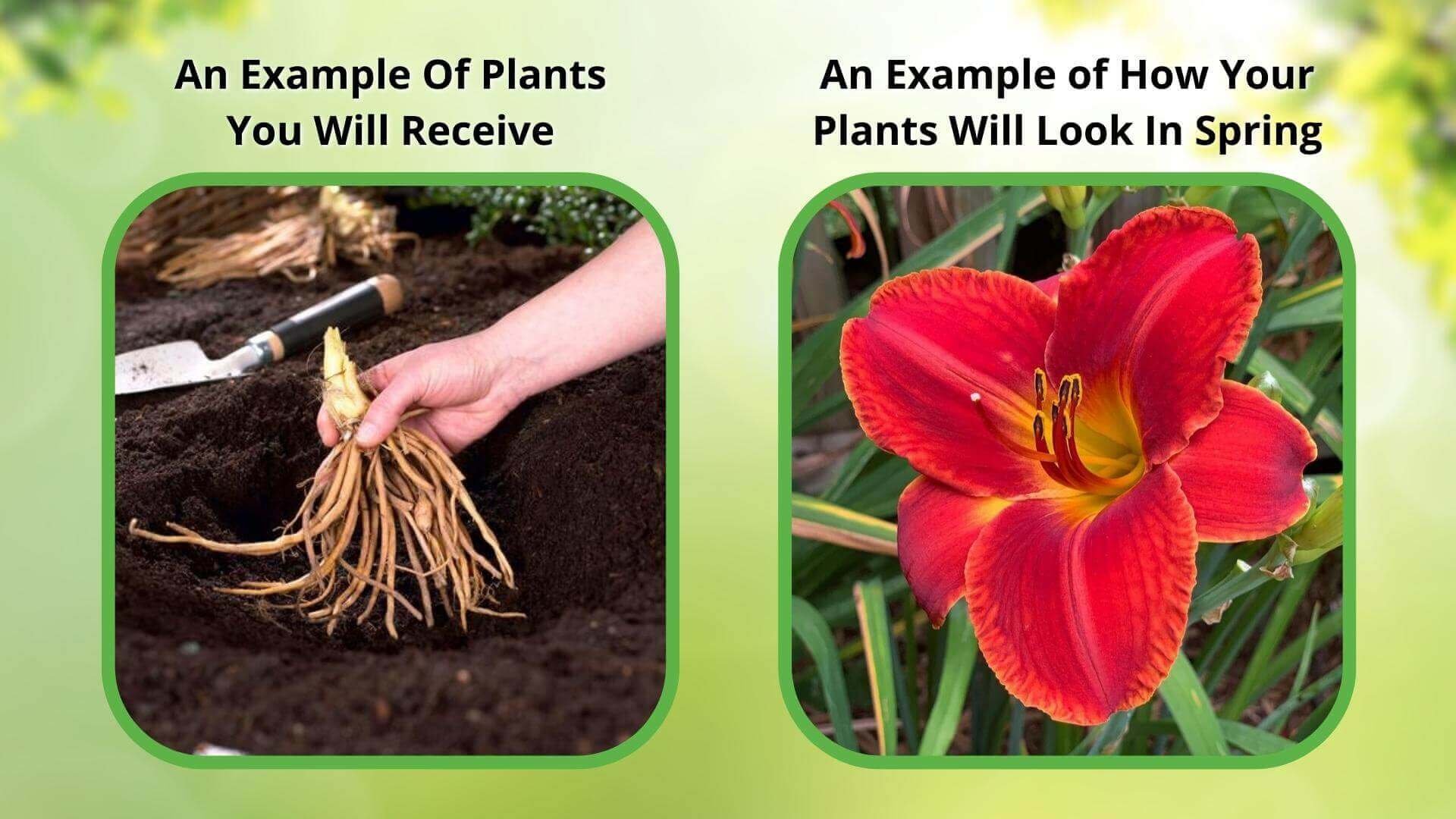
Bloom Season
Summer
Bloom/Foliage Color
Purple
Height at Maturity
Over 12"
Care
Echinacea plants thrive in well-draining soil with regular watering. They are generally drought-tolerant once established. Remove spent flowers to encourage continuous blooming. Prune back dead stems in late fall or early spring. Fertilize lightly in early spring for best growth.
Plant Reproduction
Echinacea Plant spreads naturally through self-seeding
Shipping date depends on the date displayed and chosen when you order from the product's page.
We only accept returns on plants verified dead. If you think your plants have died, we offer a 1 year warranty, please use this File a Claim Link to verify dead plants and start with return warranty process.





.png?v=1722114816947&em-origin=cdn.accentuate.io&em-format=auto)
Medicinal Benefits:
Echinacea is well-known for its medicinal properties, often used to boost the immune system and support overall health. Growing Echinacea not only beautifies your garden but also provides potential health benefits.
Pollinator Magnet:
The flowers attract a variety of pollinators, including bees and butterflies, which helps support a healthy garden ecosystem. Their presence can enhance biodiversity and aid in the growth of other plants.
Vibrant Blooms:
Echinacea features striking daisy-like flowers in bright shades like dark purple. These vibrant blooms provide a splash of color and stand out beautifully in any garden setting.
Easy-Care Garden Favorite:
Echinacea plants are resilient and drought-resistant, needing little upkeep once settled. They adapt well to different soil types and conditions, making them ideal for gardeners looking for a low-maintenance option.
Caring Tips
How do I care for my Echinacea Plant?
Each box contains detailed care instructions and information about your product. But here's the basics.
Care Tips
Echinacea plants thrive in well-draining soil with regular watering. They are generally drought-tolerant once established. Remove spent flowers to encourage continuous blooming. Prune back dead stems in late fall or early spring. Fertilize lightly in early spring for best growth.
Light Requirements
Echinacea, commonly known as coneflower, flourishes in full sun, needing 6 hours of direct daylight daily. It can tolerate partial shade but will bloom less abundantly. Full sun ensures the healthiest growth and vibrant flowering.
Hardy Planting Zones
3 • 4 • 5 • 6 • 7 • 8 • 9
Header
Use this content to share information about your store and products.
Frequently Asked Questions
How often should I water my plants?
How do I know if my plant is getting too much or too little sunlight?
What should I do to prepare my plants for winter?
What are the signs that my plant needs fertilizing?
How can I prevent pests from damaging my plants?
How do I choose the right plant for my climate zone?



